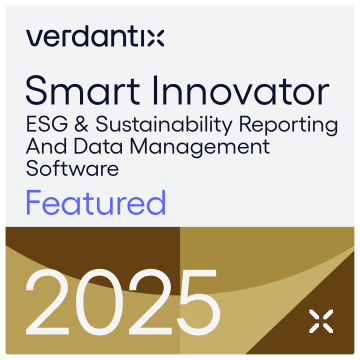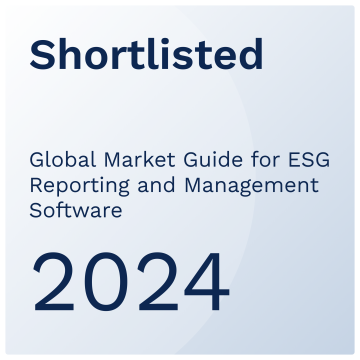High-impact software features
Validate your emission data
Ensure that all relevant emissions data is in place for getting your targets validated by the SBTi in aspects such as GHG accounting and scope 3 screening.
Setting science-based targets
Navigate a clear path to setting science-based targets for GHG emissions in line with the evolving framework of the Science Based Target initiative (SBTi).
Setting science-based targets and securing validation by the Science Based Target initiative (SBTi) is a challenging task that requires specific knowledge of the framework and industry praxis. Position Green’s complete Science-Based Targets Solution helps smooth the process of identifying, collecting and tracking relevant emissions data and delivering on targets post-validation.
Ensure alignment of your GHG emissions data with the GHG Protocol and SBTi-specific requirements ahead of the target calculation.
Position Green offers courses in the fundamentals of GHG accounting and ESG learning as well as specific handbooks on the SBTi for both SMEs and large companies.
See how you can take the admin out of impact with Position Green’s software.
Get a tour of the software and see how it works
Talk to an ESG software expert
No strings attached



The Science Based Target initiative (SBTi) is a partnership between CDP, the United Nations Global Compact, World Resources Institute (WRI) and the World Wide Fund for Nature (WWF). The SBTi was created with the aim of driving ambitious climate action in the private sector by enabling organisations to set science-based emissions reduction targets, in line with the Paris Agreement goals.
The SBTi provides scientific research, guidance on best practices for emissions reduction and technical assistance in setting science-based targets grounded in climate science. The launch of the SBTi Net-Zero Standard ahead of COP26 established the world’s first framework for corporate net-zero target setting.
Science-based targets help companies determine how much and how fast they need to reduce GHG emissions to align with efforts to limit warming to 1.5°C. Setting a science-based target enables companies to provide resilience against climate regulation and boosts investor confidence.
At the start of 2023, more than 4,000 businesses around the world – encompassing over a third of the global economy’s market capitalisation – are already setting targets or committing to doing so by working with the SBTi. Both large companies and SMEs from all sectors can set Science-Based Targets (SBTs).
Businesses who sign the SBTi commitment letter are immediately recognised as “Committed” on the website of SBTi, the CDP, UN Global Compact and We Mean Business.
The process of setting these targets is rigorous and demands that a company has good transparency in tracking emissions as well as an efficient reporting system. This is due to the targets being developed with a base year, from which a certain amount of reductions need to be reported yearly. There are different processes and requirements in setting SBTs based on the type and size of company.
The foundation of the SBTi is to get businesses committed and to ultimately influence their industries to follow the same ambitious path for emission reductions. For large companies in particular, and in the context of setting net-zero targets, much of one’s scope 3 emissions (value chain emissions) need to be accounted for. This means that suppliers of businesses with SBTs are also engaged and contribute to an accelerated effect on decarbonisation throughout industries.